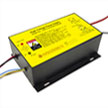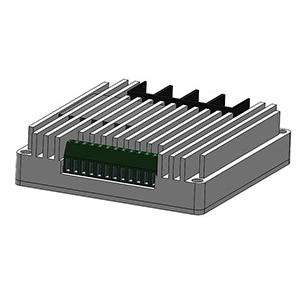How an Amplifier Drives a Capacitive Load

Consider a single pulse = one rise and one fallCharge transfer on each transition = CIoad •ΔVout = lrise •Trise = lfall•TfallEnergy dissipated in Qhigh = average voltage • current• time =(Vbus-Vout_avg)•lrise •Trise =(Vbus-Vout_avg)•CIoad •ΔVoutEnergy dissipated in Qlow = average voltage• current• time = Vout_avg • lfall•Tfall = Vout_avg •CIoad •ΔVoutTotal energy dissipated in Qhigh and Qlow = (Vbus-Vout_avg)•CIoad •ΔVout + Vout_avg •CIoad •ΔVout = CIoad •Vbus•ΔVoutFor repeated pulses;Total power dissipated in Qhigh and Qlow = CIoad •Vbus•ΔVout•frequencyExample:100pF•2500V•400V•20kHz=2W Thanks for Ed Solomon, Triple Ring Technologies Inc. Keywords: high voltage amplifier, high voltage amplifiers, high speed high voltage amplifierhttps://www.analogtechnologies.com/High_Voltage_Amplifier.html






